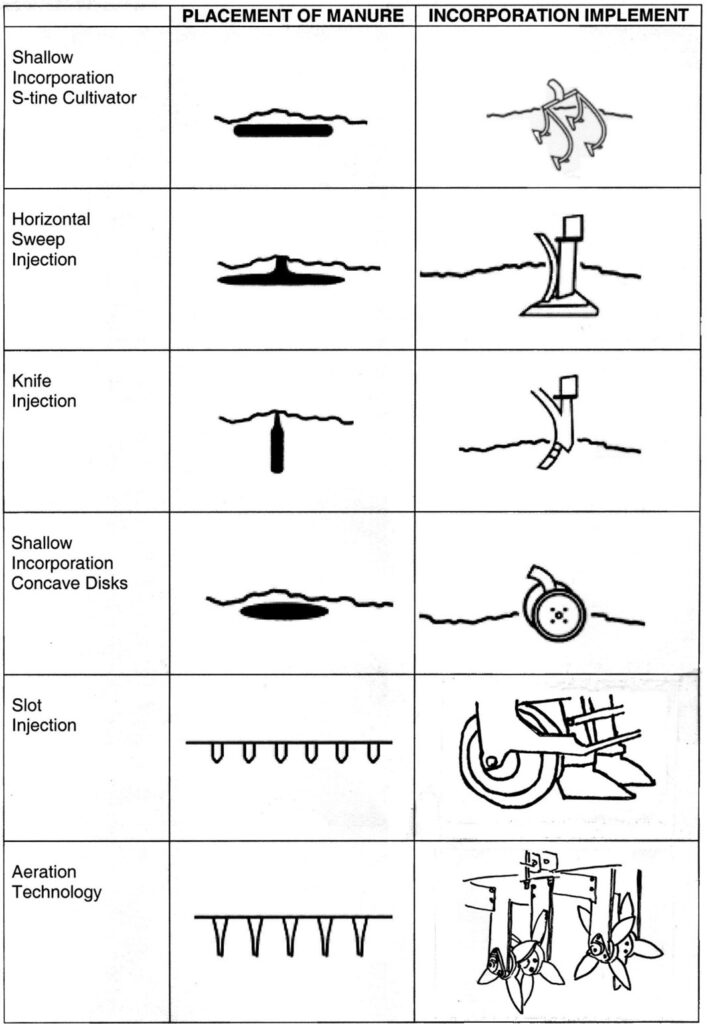Manure application is an important part of manure management and equipment design and set up will impact manure distribution, utilization and potential losses.

Application timing
The timing of manure application may be driven by manure production and available storage. There should be enough storage capacity to allow application when field and soil conditions are fit.
Meeting crop requirements
Soil test results, nitrogen credits from legume crops or previous manure applications and yield goals will determine the maximum economic manure application rate and/or additional fertilizer requirements. Often soil test levels from livestock farms indicate that soil fertility levels are high enough that no response would be expected from additional nutrient applications.
An alternative to determining application rates from soil test values is to apply manure based on the amount of nutrients removed by a crop and then match phosphorus and/or nitrogen from manure to determine an application rate. In theory this method should maintain soil fertility levels. When manure application occurs ahead of a specific crop in the rotation, application rate may reflect nutrient removal from multiple crops, depending on soil fertility status of the field. The Crop Nutrient Calculator in AgriSuite provides crop nutrient needs based on soil test and crop nutrient removal. Generally, the ideal manure application rate falls somewhere between soil test needs and crop nutrient removal. Average nutrient removal by common fields details approximate nutrients removed from the harvested portion of the crop.
For most types of manure, phosphorus will limit the application rate and commercial nitrogen will be required for some crops (i.e. corn, wheat). If manure is applied frequently or to meet the full nitrogen requirements of a corn crop, there will be more P and K applied, leading to increased soil fertility levels, and potentially increased environmental risk. For liquid manure, an application goal of two-thirds of the nitrogen requirements for a corn crop is recommended, with the remainder being supplemented with commercial N sources. This strategy helps prevent soil fertility imbalances for P and K, offsets uneven application patterns and ensures the crop has nitrogen available when required, since N mineralization from manure may not always match crop N needs.